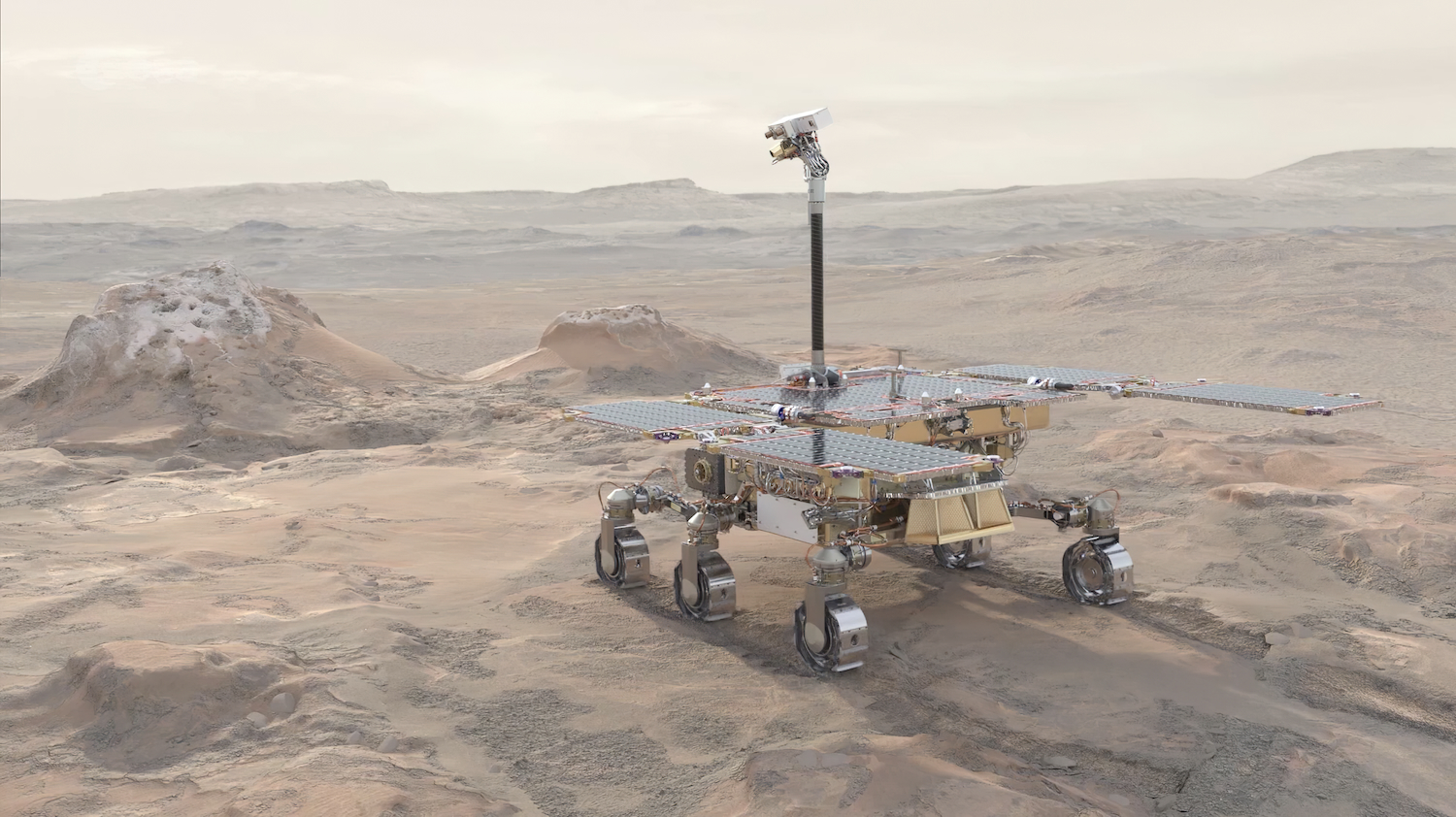ExoMars/Rosalind Franklin Mission Update
- ESTEC, European Space Agency, Keperlaan 1, Noordwijk 2201AZ, The Netherlands (elliot.sefton-nash@esa.int)
Finding signs of life elsewhere is one of the most important scientific objectives of our time.
From the very beginning in 2002, ExoMars was conceived to answer one question: Was there ever life on Mars? All project design decisions have focused and continue to centre on the achievement of this single scientific goal. This is particularly the case for the Rosalind Franklin rover [1]. Putting the science team in the best possible condition to search for physical and chemical biosignatures has led to:
- the need for a 2-m depth drill;
- the choice of payload instruments,
- the landing site requirements that led to selection of the Oxia Planum landing site, and
- the surface exploration strategy that guides how the rover and instruments are used together to achieve the mission objectives.
The Rosalind Franklin Mission (RFM) is a re-establishment of the ExoMars 2022 mission. In a new partnership with NASA, RFM is on schedule for launch in 2028. The ExoMars Science Working Team (ESWT), ExoMars project and industrial partners continue to be engaged in a programme of refurbishment of the rover and its instruments, and preservation of science team expertise and knowledge. The revised mission timeline provides great opportunity for further preparatory science, including of the Oxia Planum landing site and its analogues, by interpretation of orbital data, lab- and field-work, and numerical simulations.
The ExoMars Rover Science Operations Working Group (RSOWG), chartered in 2019 by the ESWT, is re-established for the 2028 mission and continues working at a sustainable pace to address specific needs serving to advance science readiness. The ‘Micro’ sub-group work on topics regarding the spatial scale of the samples that will be extracted from down to 2m by the rover’s drill, their analogues, and plans for their analyses, including by the three instruments in the rover’s Analytical Laboratory Drawer (ALD): MicrOmega [2], RLS [3] and MOMA [4]. Ongoing work regards a set of ‘Mission Reference Samples’ – a suite of analogue samples most relevant to the landing site and mission objectives, which are under characterization by ground models of these instruments. Members of the ‘Macro’ sub-group continue geological interpretation of the landing site, and recently have published the highest resolution geologic map of Oxia Planum, the culmination of a 4-year team effort [5]. In addition, a dedicated set of co-authors are preparing the Strategic Science Plan (SSP) of the mission, which traces mission science objectives, through to specific questions linked to hypotheses that are testable by the scientific instruments in the ‘Pasteur’ Payload.
A new European Entry Descent and Landing Module (EDLM) that is being developed will deliver Rosalind Franklin to Oxia Planum. Meanwhile, dedicated efforts are underway to maintain, and update as needed, systems at the Rover Operations Control Centre (ROCC - Turin, Italy). A continued plan of testing and simulations is planned in the coming years at ROCC, providing opportunities to exercise Science and Control Team processes. On the flight model of the Rosalind Franklin rover, instrument refurbishment activities are underway and a new infrared spectrometer ‘Enfys’ is in development to replace the analytical capabilities of the now disembarked ISEM instrument.
A special Science Knowledge Management Programme (SKP) has been set up and is now supporting key expertise within the science and instrument teams. SKP ensures that the valuable team knowledge and experience that was built in preparation for the 2022 mission opportunity [6] can be retained and developed.
This presentation will explain how ESA, with NASA partners, has reconfigured the Rosalind Franklin mission for a launch in 2028, present the current the level of advancement of the project, and will highlight the main science objectives and overall strategic plan for the mission.

Figure 1: Artist’s view of Rosalind Franklin approaching hydrothermal mound remains.
References
[1] Vago, J. L. et al. Habitability on Early Mars and the Search for Biosignatures with the ExoMars Rover. Astrobiology 17, 471–510 (2017).
[2] Bibring, J.-P., Hamm, V., Pilorget, C., Vago, J. L. & the MicrOmega Team. The MicrOmega Investigation Onboard ExoMars. Astrobiology 17, 621–626 (2017).
[3] Rull, F. et al. The Raman Laser Spectrometer for the ExoMars Rover Mission to Mars. Astrobiology 17, 627–654 (2017).
[4] Goesmann, F. et al. The Mars Organic Molecule Analyzer (MOMA) Instrument: Characterization of Organic Material in Martian Sediments. Astrobiology 17, 655–685 (2017).
[5] Fawdon, P. et al. ‘The high-resolution map of Oxia Planum, Mars; the landing site of the ExoMars Rosalind Franklin rover mission’, Journal of Maps, 20(1) (2024). doi: 10.1080/17445647.2024.2302361.
[6] Sefton-Nash, E. et al. Science Operations Readiness of the ExoMars 2022 Rover Mission. in Lunar and Planetary Science Conference LPI Contributions 2678. Abs. 2109 (2022).
How to cite: Sefton-Nash, E. and Vago, J. L.: ExoMars/Rosalind Franklin Mission Update, Europlanet Science Congress 2024, Berlin, Germany, 8–13 Sep 2024, EPSC2024-856, https://doi.org/10.5194/epsc2024-856, 2024.